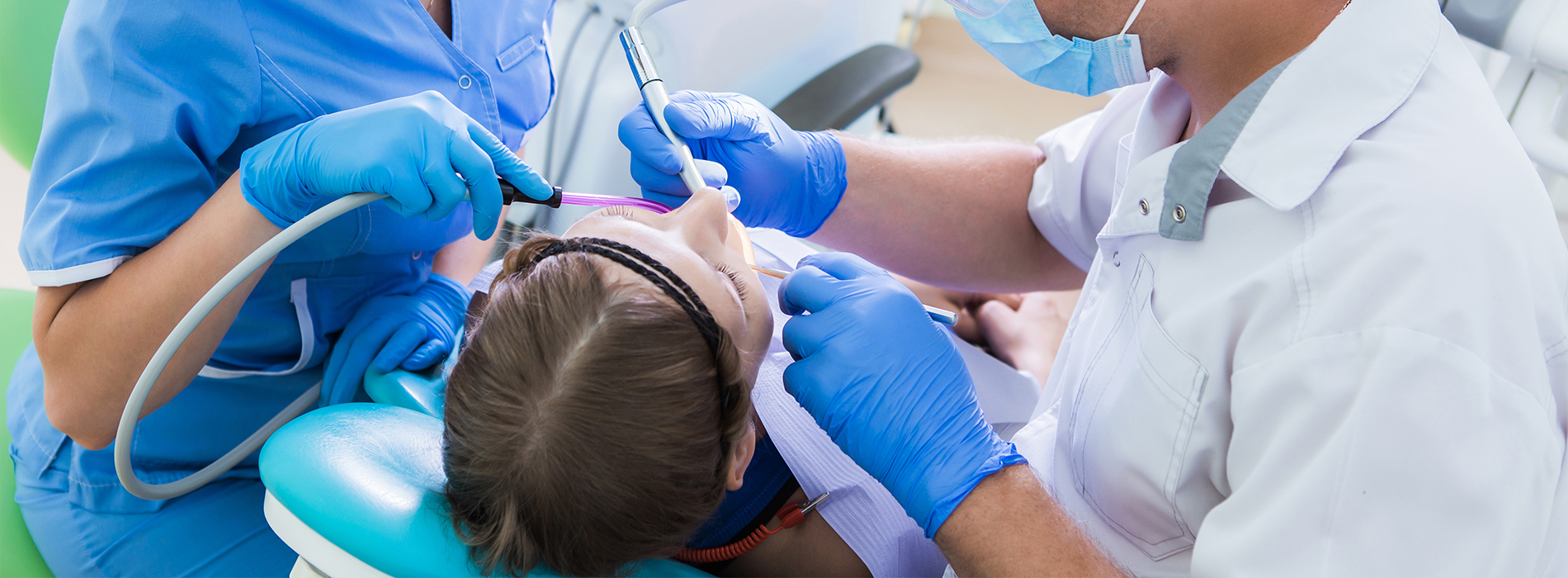
Sometimes prior to the fabrication and placement of a dental prosthesis, certain oral surgery procedures such as sinus lifts, bone grafts, bone remodeling and tissue recontouring are needed to ensure the best outcomes of care. These procedures allow new dental crowns, dentures or dental implants to have the best fit and to achieve the maximum level of comfort as well as optimal function, and appearance.
With several years of advanced specialty training, Oral and Maxillofacial Surgeons are well trained in all types of dental anesthesia and sedation and can ensure patient comfort during surgical procedures.
Sometimes it is necessary to extract a tooth. This can happen for a variety of reasons. Extractions are commonly performed in cases where a deciduous “baby” tooth is reluctant to fall out, a severely broken down and non-restorable tooth is present, or “wisdom tooth” is poorly positioned and unable to fully erupt into place.
To reduce any anxiety and insure patient comfort whenever a tooth extraction is necessary, the procedure, the post surgical instructions, as well as any restorative follow-up care will be carefully and completely explained.
Sometimes it is necessary to extract a tooth. This situation can arise for a variety of reasons. Extractions are commonly performed in cases where a deciduous “baby” tooth is reluctant to fall out, a severely broken down and non-restorable tooth is present, or a “wisdom tooth” is poorly positioned and unable to erupt into place.
Oral and maxillofacial surgeons are often referred patients by general dentists as well as dental specialists for the extraction of permanent or primary teeth that are erupted, unerupted, fractured, severely broken down, or ankylosed (fused to the surrounding bone). With their extensive training in both medicine and dentistry, oral and maxillofacial surgeons are also called upon to treat patients who are undergoing complex medical treatment, have certain medical conditions or take specific medications that can influence dental extractions as well as healing and recovery from all types of oral and maxillofacial surgical procedures.
In addition to providing skilled, knowledgeable, precise, and experienced care in all situations for which dental extractions are required, oral and maxillofacial surgeons are trained in all methods of dental anesthesia and sedation to ensure patient comfort throughout every procedure.
Following all dental extractions, our oral and maxillofacial surgeon will provide detailed instructions for post-operative care and any follow-up appointments as required.
Bone loss in the jaws and around the teeth can be the result of missing teeth, periodontal disease, or trauma. This bone loss is more than a detriment to oral health and function; it can also alter facial appearance as the support for the natural contours of the face is diminished.
When a tooth is extracted, the natural stimulation to the underlying bone that is generated by the forces of biting or chewing is lost. The fact of the matter is that bone width can be reduced by as much as 25% in the first year following tooth loss.
By performing grafting procedures, the oral and maxillofacial surgeon can help restore the bone to its original dimensions to maintain facial esthetics, repair the damage caused by periodontal disease as well as facilitate the success of procedures such as the placement of dental implants. A bone graft provides a platform or “scaffolding” for new bone growth and the material for a bone graft can be derived from the patient, other donor sources or be comprised of synthetic, bone-like materials.
Several types of grafting procedures are performed depending upon the particular needs of the case.
A bone graft can be placed immediately upon the extraction of a tooth or some time after tooth loss. Placing a bone graft at the time of tooth removal reduces the amount of bone loss in the area to maintain the hard tissue support that is required for the future placement of a dental implant. When a bone graft is placed awhile after tooth loss, a separate surgical procedure is required to reflect the soft tissue, expose the underlying bone, place a graft and then suture the soft tissue back into place.
For patients lacking a sufficient amount of bone for a dental implant to replace a maxillary back tooth (upper back tooth), a procedure, which is known as a “sinus lift” is performed. During this surgical procedure, the sinus membrane is lifted, and bone graft material is added between the jaw and the floor of the sinus to provide the needed bone height to support a dental implant successfully.
In addition to bone grafting for purposes of ridge preservation or augmentation to allow for dental implants, an aesthetic ridge augmentation procedure to restore the natural contours of the bone is sometimes performed in preparation for fixed bridgework to achieve a more cosmetically pleasing result.
To guide tissue regeneration as well as protect the graft and promote healing, the oral and maxillofacial surgeon may place specialized membranes and biologically active materials over the grafting material.
This surgical procedure involves lifting the maxillary sinus membrane and adding bone graft material to provide the bone height needed to support a dental implant.
Our goal is to help every patient experience the benefits of good oral health and a beautiful smile. We value the trust you have placed in our office and strive to provide solutions that meet your dental needs and expectations of care.
